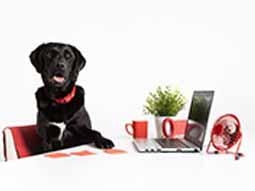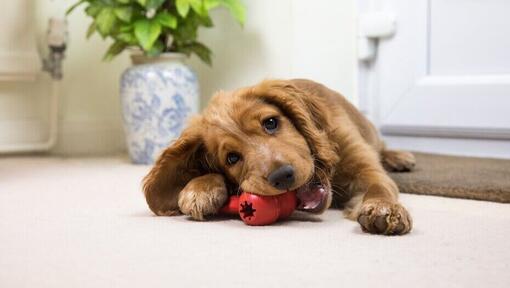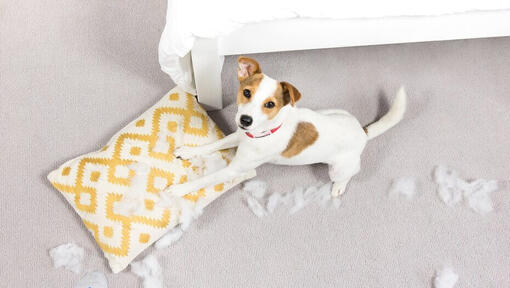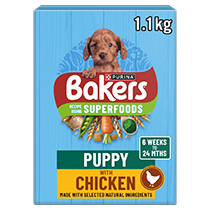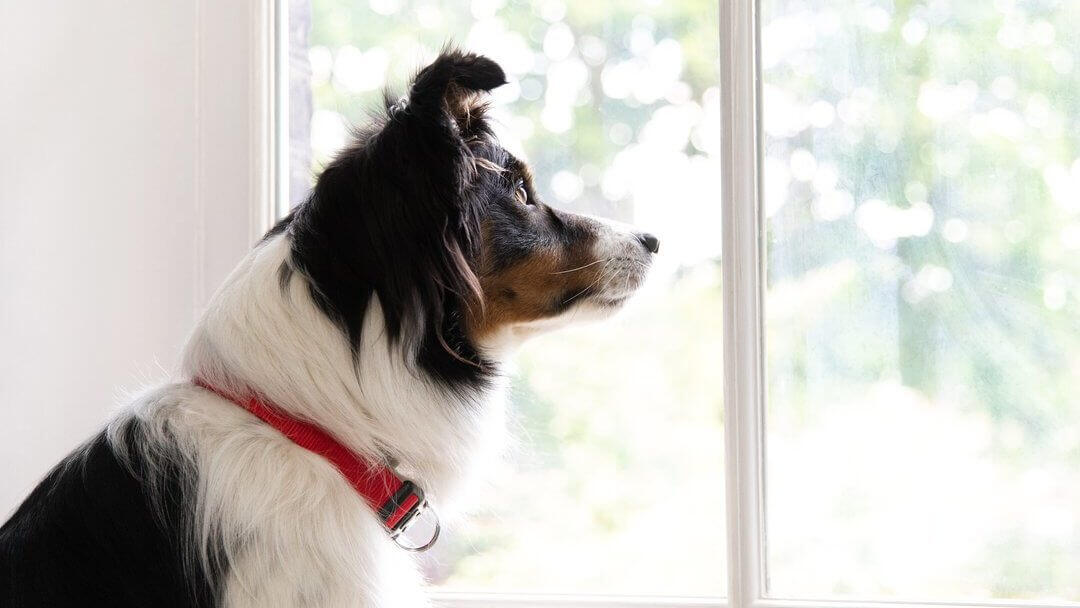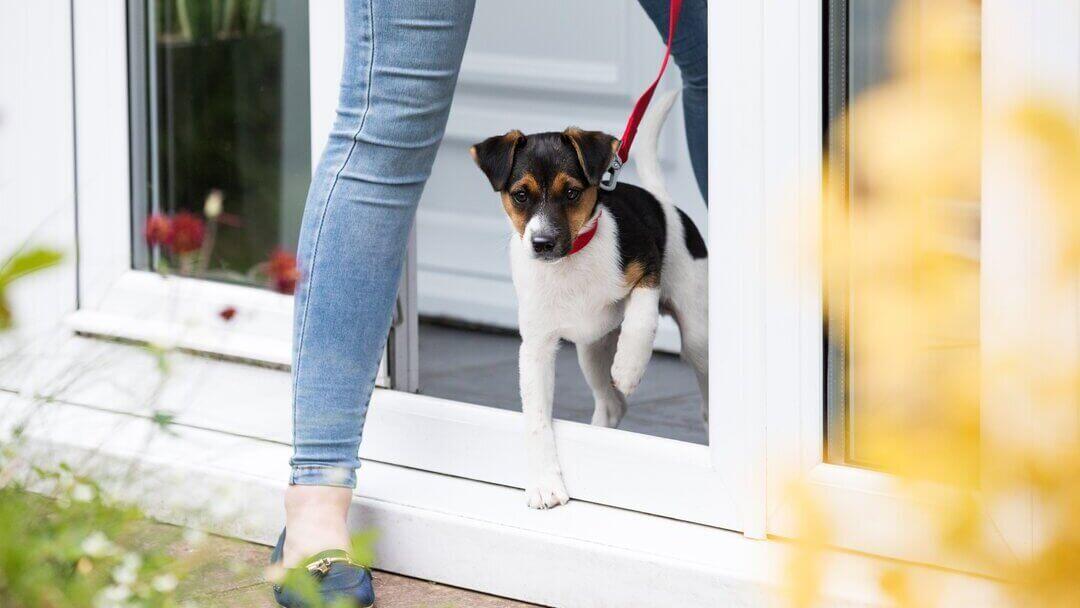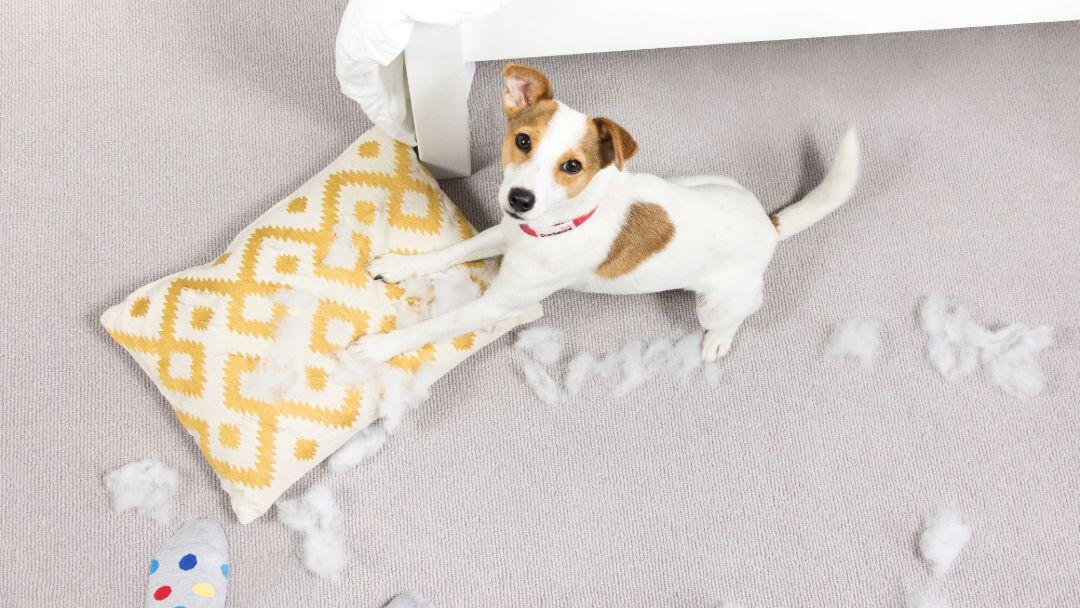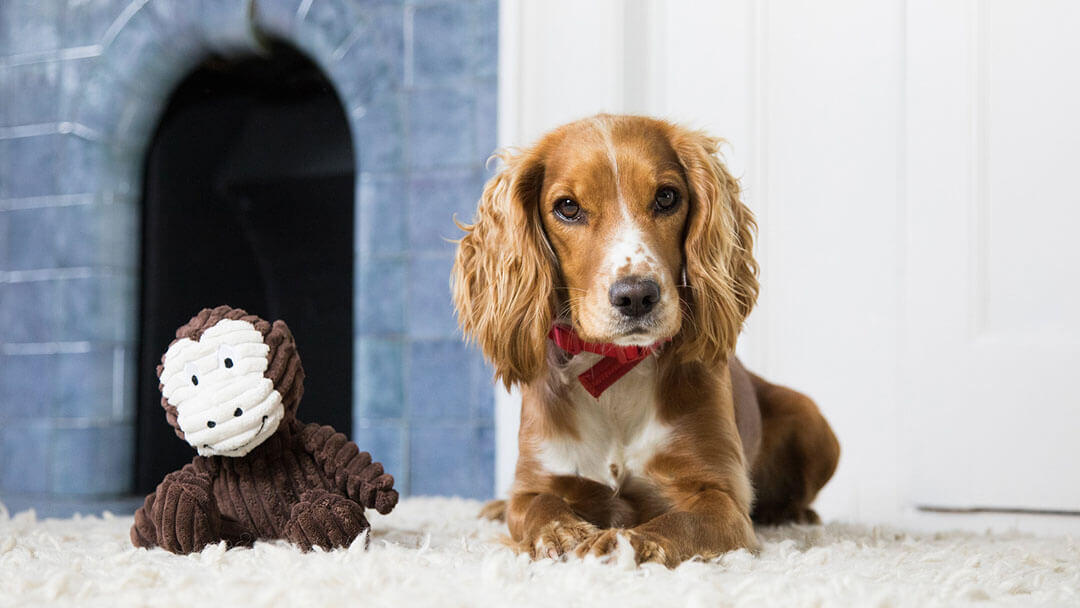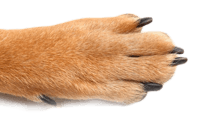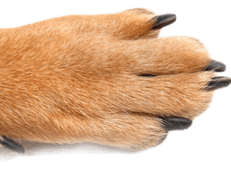

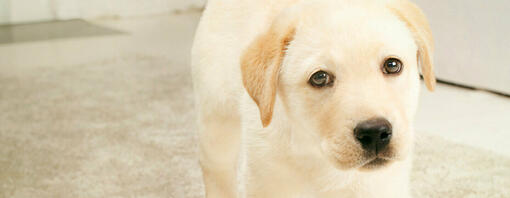
Dogs are social and crave company by nature – that’s why they bond so well with us. However, if they’re not taught over time how to deal with being alone, this can lead to separation related behaviour problems, commonly known as separation anxiety. Keep reading to discover the common symptoms of separation anxiety, and find out how you can help them overcome it with our useful guide.
Why do puppies and dogs get separation anxiety?
The first thing to remember is that this is entirely natural. For dogs as a social species, being alone is scary and often makes them feel unsafe, so reacting to being left alone in this way is to be expected unless we spend time teaching them otherwise.
It’s easy to think your dog’s being naughty or is annoyed at you for leaving them, however this couldn’t be further from the truth. Separation anxiety arises when dogs haven’t been taught the coping strategies they need to deal with being left, and is a fear (sometimes intense) of being alone – and can be viewed as similar to a human panic attack and is just as debilitating.
It’s difficult for owners to deal with a dog or puppy that can’t be left alone, and it’s probably one of the hardest behavioural problems to overcome. Like many behaviour related problems however, prevention is far better than a cure.
In many cases, separation related behaviour problems have their roots at the very beginning of a puppy’s new life with their owner.
Owners can become so besotted by their new puppy that they’re delighted when they want to follow them everywhere – and this bonding is vitally important. But, if you allow them to constantly be with you, every second of the day, this is what they’re going to grow up to expect and they haven’t developed any resilience to short periods of being on their own or ever learnt that sometimes being alone isn’t that bad. Then suddenly when you need to go out without them, you discover that their world crumbles without you. This is where slow and very well managed lessons in that early weeks of life with you are so important.
In other cases, a new owner may create a fear of being alone by shutting their puppy in the kitchen to spend their very first night on their own, without stopping to realise that this is a tiny baby, whose world has just totally changed and who has never spent a night away from their mother and littermates. This often immediately teaches the puppy that in this new life, they are going to be left alone and that when this happens, it’s distressing and scary. The very definition of separation anxiety.
Puppy and dog separation anxiety symptoms
Symptoms of separation anxiety vary from the mild to the extreme and may include the following:
- Looking worried and stressed.
- Whining.
- Excessive barking and/or howling when left.
- Chewing and other destructive behaviours.
- Loss of toilet training in an otherwise toilet trained dog.
- Vomiting or diarrhoea.
- Scratching or digging at doors.
- Pacing.
- Excessive panting and salivation.
- Attempts to escape.
- Self-mutilation.
- Aggressive behaviours or other apparently unrelated behaviours that occur at other times due to increased stress or anxiety.
How to get it right from the start
From the minute you bring your puppy home, they need to learn that they can trust you to be there for them, but there are times when they can’t always be with you – and that’s fine. Make a habit of giving them the very best treat that you know they love and that will take a minute or two to eat, and then going off into a different room and leaving them on their own for a few minutes. If they follow you, that is fine. But ignore them and just stand and stare out of the window or check messages – do something really dull. In other words, teach them that sometimes following you is often boring but staying on their own can be really enjoyable. Make this a very short period to start with and then come back with no drama or fuss.
You are giving them the choice but for puppies who often have a big case of FOMO (fear of missing out – and let’s face it, you might be doing something really exciting) learning that you can be boring and good stuff can happen when you are not there is a valuable lesson.
Don’t lock them away to do this – as otherwise you are likely to create frustration. Frustration probably causes separation related behaviour problems just as much as fear of being alone does.
You can do this when you feed them their dinner too. Just quietly walk away while they are eating, and return with no fuss at all. Make these comings and goings a part of life from the very start so you give them the confidence to be able to deal with that.
You can build that up to going and having a shower without them, going for a walk around the garden – anything to teach them right from the beginning that not being with you every minute is not a crisis, and if you give them something tasty to occupy them with, it can even be seen as something to look forward to.
HOWEVER… if at any point, your puppy gets distressed or seems worried, stop. Go back a few steps. Remember you are aiming to teach them that being alone is OK.
Some breeds/types and individuals struggle with this far more than others. Often this is companion breeds, some of the herding breeds and dogs who were designed to work very closely with their owner. And certain individuals of any breed. If you try and push this too far too fast in these pups, you are in danger of creating the very problem you are trying to prevent.
If all is going well, you can slowly start to go out without your puppy for five minutes, then 10 minutes, then 30 minutes - until they’re happy to stay on their own for an hour, but always make sure that you take it very slowly and to start with stay close at hand.
Leave them in a totally safe area where they feel comfortable with something to remind them that fabulous things happen even when you are not there. Use stuffed Kong’s filled with their favourite yummy snacks or dog-safe peanut butter etc to keep them occupied and make your absence enjoyable.
It is important to be able to monitor this at all times though. We don’t know how our puppy is behaving when we are not there to see them, and it is easy to assume they are happy when maybe they aren’t.
Many people have no idea their dog has separation anxiety until their neighbours tell them that they are barking or howling – or until you see the more extreme symptoms.
Use technology to help you know exactly what’s going on when you leave, so you genuinely know your puppy is happy and not distressed. Set up a webcam with an app so you can watch your puppy on your phone while you’re away.
In an ideal world, we wouldn’t leave our puppies ‘home alone’ until they had gone through adolescence and were in that natural developmental phase when they are naturally becoming independent from their care giver and we had created a secure attachment but the reality for many people is that isn’t possible.
Time spent teaching your puppy that being on their own is safe and part of being a family dog will pay off in the future – but remember that dogs need company and social contact, and no dog is happy being regularly left alone for hours on end and some will really struggle with it.
Helping puppies with separation anxiety
If you suspect you already have a puppy with separation anxiety, there are a few things you can try to help them overcome the problem.
Rule out any other problems
First things first, make sure your puppy’s behaviour isn’t due to another cause. They could be bored, frustrated, being left for too long, or they may not be getting enough social company or appropriate physical or mental exercise, which may lead to behaviour problems that look like separation anxiety or share some of the symptoms.
These symptoms often get lumped in with separation anxiety, but actually they are often fairly easily solved by looking at the symptoms and working out what might be causing them – and then making some changes.
- Is loss of toilet training because they are being left for too long – or not taken out before being left?
- Are they barking because they are bored, under-exercised, hearing neighbours or passing squirrels?
- Are they destroying your house because you have left them for hours with absolutely nothing to do?
- Are they getting enough exercise both before and after they are left or are they full of pent-up energy?
- Are they getting an outlet for their breed/type specific behaviours?
- Do they have plenty of mental enrichment?
- Are you leaving them for too long too often – especially if they are a breed or individual who absolutely thrives on your company?
Once again, watching your puppy on a webcam can help you decide whether it’s boredom – in which cases the behaviours will be done fairly calmly and often intermittently, with sleep in between. Or, if it’s separation anxiety, it’s more likely to be constant, and your puppy will display obvious signs of stress.
It’s important to note that sometimes puppies may start off as bored but as the period of absence goes on, may work themselves up and become really stressed and anxious.
If you’re unsure, or if you think your dog has separation anxiety, find a professional behaviourist experienced in separation related behaviour problems and have them come and assess your dog and create a behaviour modification plan. Many now do these consultations via Zoom (or other video call app) as this allows them to see your home, how your dog behaves, and look at treatment/management options remotely.
For mild cases:
- Start right back at the beginning and teach them how to deal with time apart from you before leaving them again. Your aim is to make them feel safe and relaxed when you are away and so that does mean that during this time, they should not be left alone, so you may need to get a pet sitter or a friend to help you. This is the reason why treating an established case of separation anxiety can be difficult but it is important.
- When you do start to leave them again, build this up very slowly – and use a webcam so you know your dog is relaxed.
- Leave them with a safe, interactive toy (such as a stuffed Kong) and with the radio or TV on (although be aware that if they are stressed, they will be unlikely to be able to eat or be interested in eating).
- Make sure your dog is tired when you leave them – that way they are more likely to sleep than if they were full of energy – so make sure they’ve had a good walk or game first.
- Don’t make a big fuss about leaving or coming back, this just makes your going even more of an ‘event’ for your dog.
- Try and vary your leaving routine so your dog doesn’t get wound up expecting your imminent departure.
If your puppy has a more serious separation related problem or you are not making any progress, you should find an accredited behaviourist who specialises in these issues to help you work out a programme to try and overcome it. Separation anxiety is most definitely better prevented than cured. However, it’s really important to recognise that dogs are social animals, and if they’re going to be frequently left alone for long periods of time, it may not be a good idea to get a dog or else have a plan in place to make sure your dog can have company during the day while you are out.
Another option is to rescue or rehome a dog who is already used to spending time on their own and is happy to do so.
For more puppy advice and guides, take a look at our content hub, full of useful information on how to raise a healthy and happy dog.


